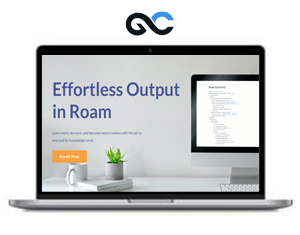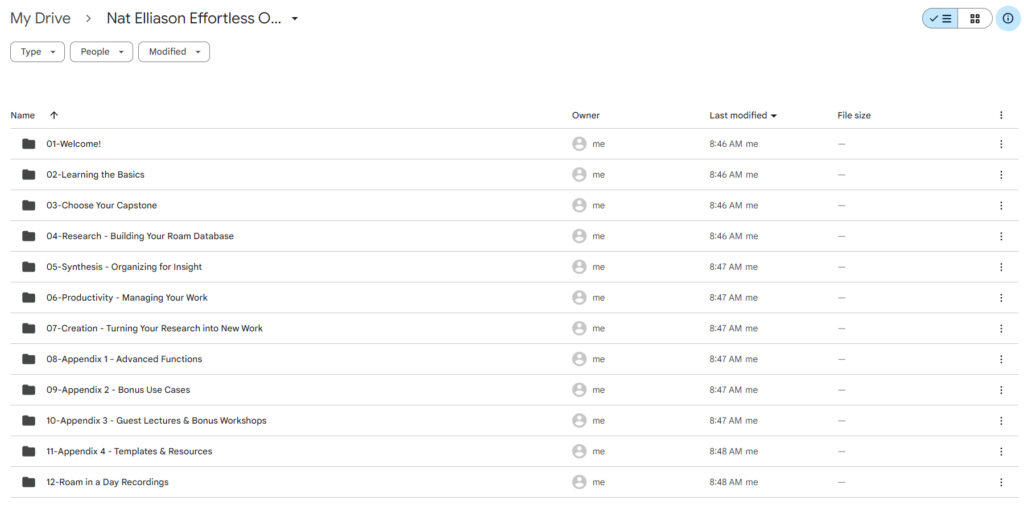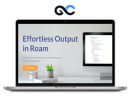Description
Download Proof | Nat Elliason – Effortless Output in Roam (9.36 GB)
![]()
Nat Elliason – Effortless Output in Roam
Introduction: Nat Eliason, a prominent figure in the productivity and learning space, introduces the concept of “Effortless Output in Roam,” a method aimed at maximizing productivity using the Roam Research note-taking platform. This approach emphasizes leveraging Roam’s unique features to streamline information processing, enhance creativity, and ultimately produce high-quality output with minimal effort.
Understanding Roam Research: Roam Research is a dynamic note-taking and knowledge management tool that enables users to create a network of interconnected notes. Nat Eliason’s Effortless Output in Roam methodology takes advantage of Roam’s flexible structure, allowing users to link thoughts, ideas, and information seamlessly. This interconnectedness facilitates a fluid and adaptive workflow.
Structured Thinking Through Blocks: Eliason advocates for structured thinking using blocks in Roam. By breaking down information into modular blocks, users can organize thoughts hierarchically, creating a visual representation of the relationships between ideas. This modular approach enhances clarity and simplifies complex topics, making it easier to generate coherent and structured output.
Dynamic Knowledge Graphs: The Effortless Output methodology encourages the creation of dynamic knowledge graphs within Roam. As users link related blocks, a web of interconnected information emerges, resembling a personalized knowledge graph. This dynamic structure allows for the fluid exploration of concepts, aiding in the generation of creative ideas and insights.
Capture, Curate, Create: Eliason’s approach involves a three-step process: capture, curate, and create. Users start by capturing information as modular blocks within Roam. These blocks serve as the building blocks of knowledge. The curate phase involves organizing and linking these blocks, creating meaningful connections. Finally, the create phase leverages the curated knowledge to effortlessly generate new content or insights.
Template-driven Workflows: To enhance efficiency, Eliason recommends the use of templates in Roam. Templates provide a predefined structure for common types of notes or documents. By utilizing templates, users can expedite the creation of various outputs, whether it’s a blog post, a project plan, or a research paper. This templated approach ensures consistency and accelerates the content creation process.
Iterative Refinement and Output: The Effortless Output methodology encourages an iterative approach to content creation. Users continuously refine and expand their interconnected blocks, fostering an evolving body of knowledge. This iterative refinement not only enhances the depth of understanding but also facilitates the effortless generation of high-quality output over time.
Cross-linking for Serendipity: Eliason emphasizes the power of cross-linking within Roam to encourage serendipitous discoveries. By linking seemingly unrelated blocks, users open the door to unexpected connections and insights. This serendipity fosters creativity and allows for the generation of novel ideas, contributing to a more dynamic and innovative thought process.
Conclusion: Nat Eliason’s Effortless Output in Roam methodology transforms the way individuals approach productivity and content creation. By harnessing the capabilities of Roam Research, users can structure their thoughts, create dynamic knowledge graphs, and employ template-driven workflows to streamline the process of producing high-quality output. This methodology not only maximizes efficiency but also nurtures creativity and serendipity in the pursuit of effortless and impactful work.














